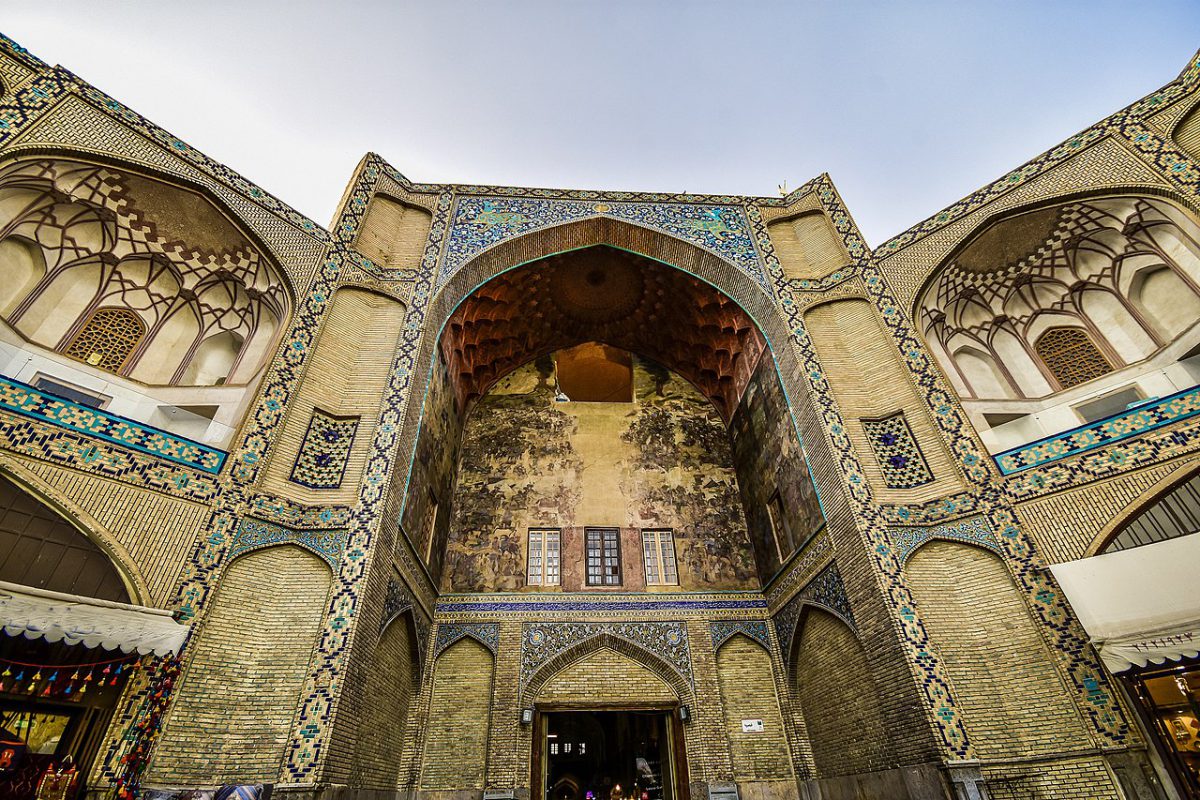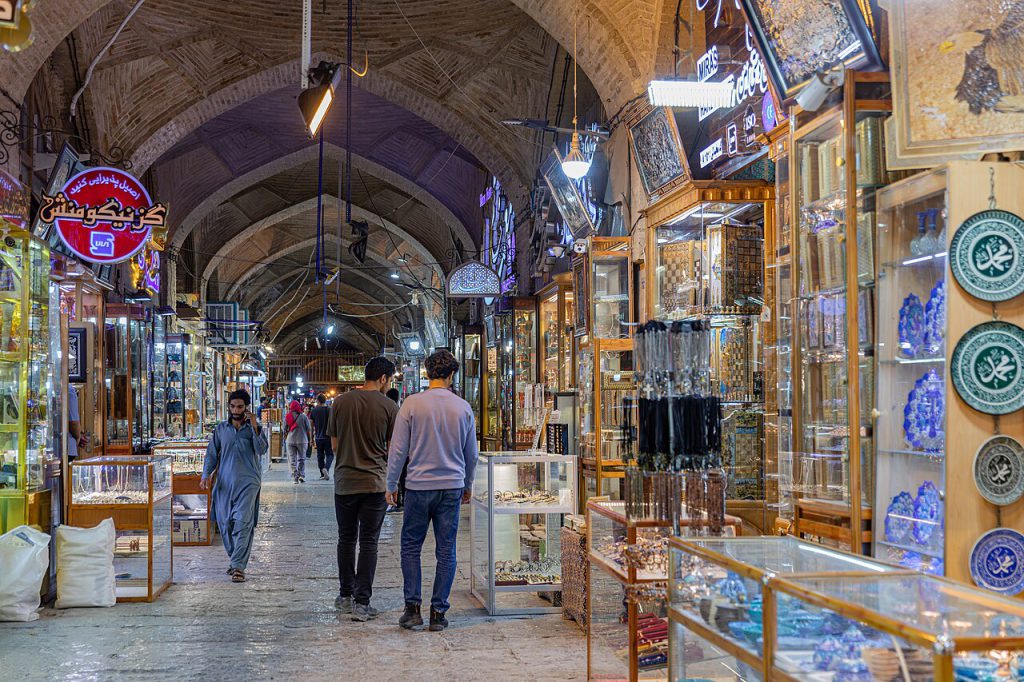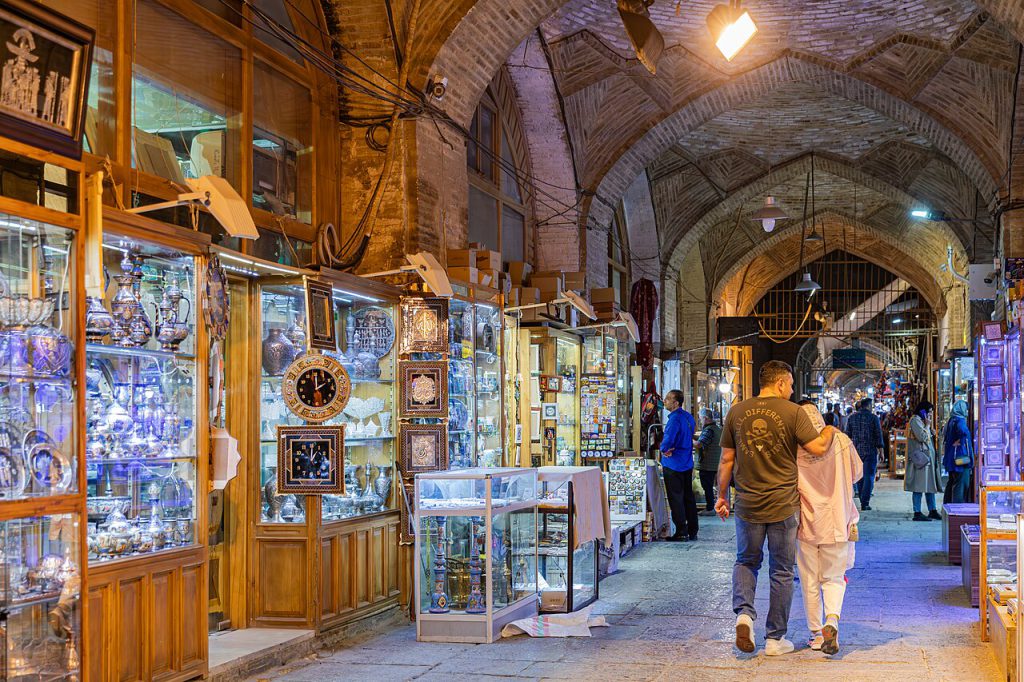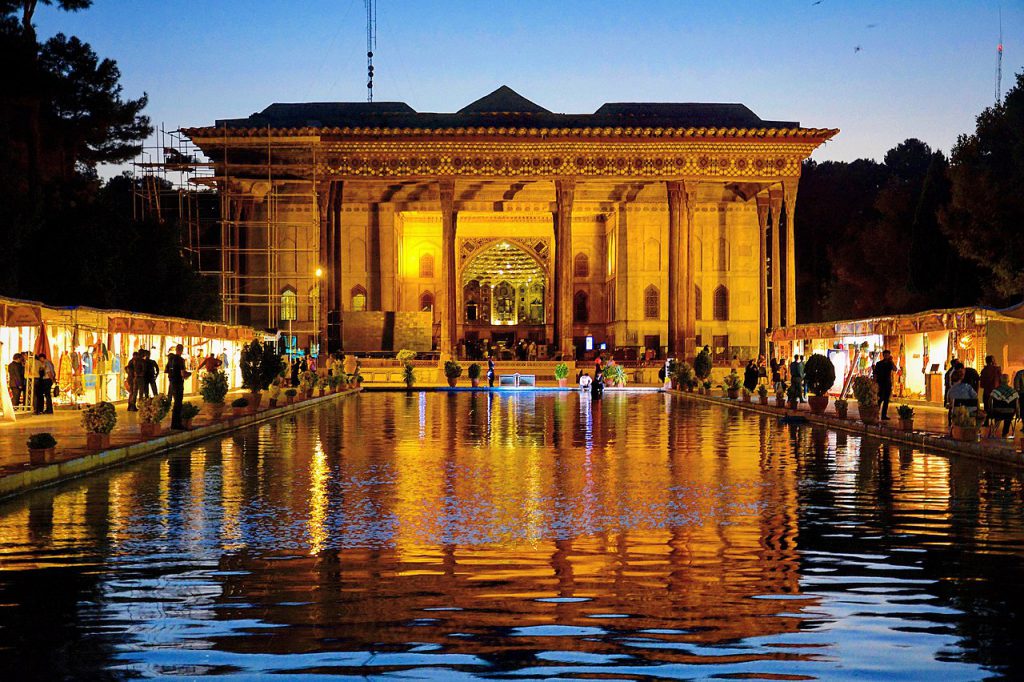Table of Contents
Isfahan, a city known for its rich history, culture, and art, boasts several enchanting Bazaars that offer a glimpse into the past. One such bazaar that stands out is the Isfahan Bazaar, also known as the Qeysarie Bazaar. This historic Bazaar holds significant importance and offers an unforgettable experience for visitors. In this article, we will delve into the captivating history and architectural marvels of Isfahan Bazaar, highlighting its unique features.
Isfahan Grand Bazaar
Isfahan Bazaar, located in Isfahan, holds the distinction of being one of the most renowned traditional Iran bazaars and a prominent tourist attraction. Often referred to as the royal Bazaar, it stretches from Qeysarie Gate to Chitsazah Bazaar and further extends to Dar al-Shafa Bazaar. The bazaar served as a flourishing center for handicrafts during the Safavid period and was regarded as one of the grandest and most opulent shopping destinations of its time.
Isfahan’s grand bazaar, of which Isfahan Bazaar is a part, boasts multiple entrances, each leading to different sections specializing in the production and sale of distinct products.
Where Is Isfahan Bazaar?
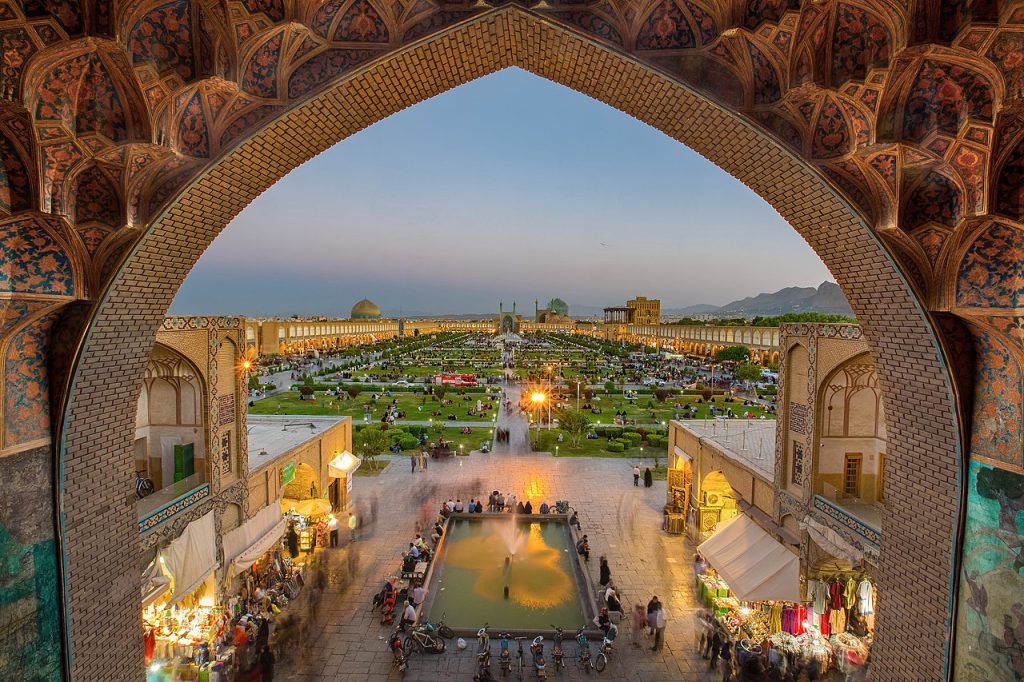
Isfahan Bazaar, or Qeysarie Bazaar, finds its place in the northern part of Naqsh Jahan Square. It is easily accessible by private car or public transportation. The bus and subway stations of Imam Hossein Square are conveniently located at a reasonable distance from Naqshe Jahan Square. From these stations, visitors can either opt for a taxi or enjoy a pleasant walk to reach their destination.
If traveling by private car, Sepeh Street or Hafez Street can serve as entry points. Moreover, parking lots in the vicinity of Naqsh Jahan Square ensure a hassle-free parking experience.
Isfahan Bazaar History
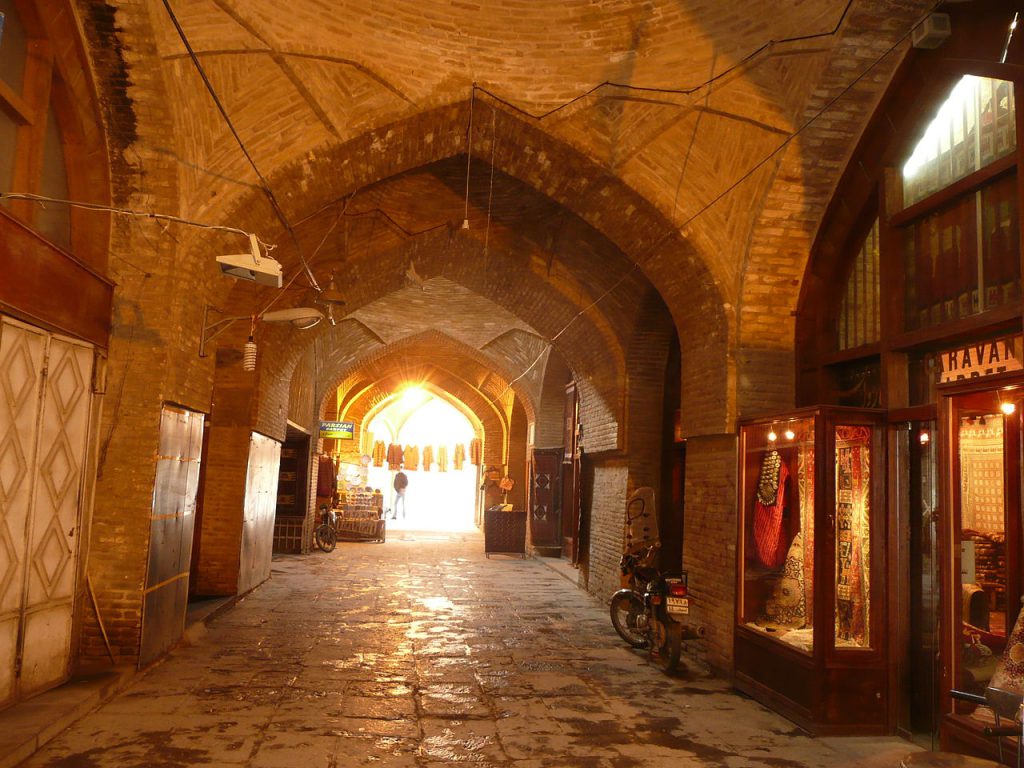
Isfahan Bazaar, commissioned by Shah Abbas I between 1011 and 1029, held immense importance during the Safavid era. It served as a hub for trading exquisite fabrics, and carpets, and even accommodated foreign commercial companies. The Isfahan Bazaar bridged the gap between Isfahan in the Safavid period and the Seljuk city, situated in the old square of that time (now known as Uprising Square).
The term “Qeysarie; Caesarea” is said to be derived from “Caesar,” alluding to a Bazaar where lightweight, luxurious goods were sold. With its ornate architecture and elaborate decorations, this section of the Bazaar, built geometrically, exuded opulence and elegance. The craftsmen of Caesarea, known for their financial prowess, contributed to making this part of the Bazaar exceptionally prosperous. Consequently, the Qeysaries earned the title of royal bazaars.
Isfahan Bazaar Architecture
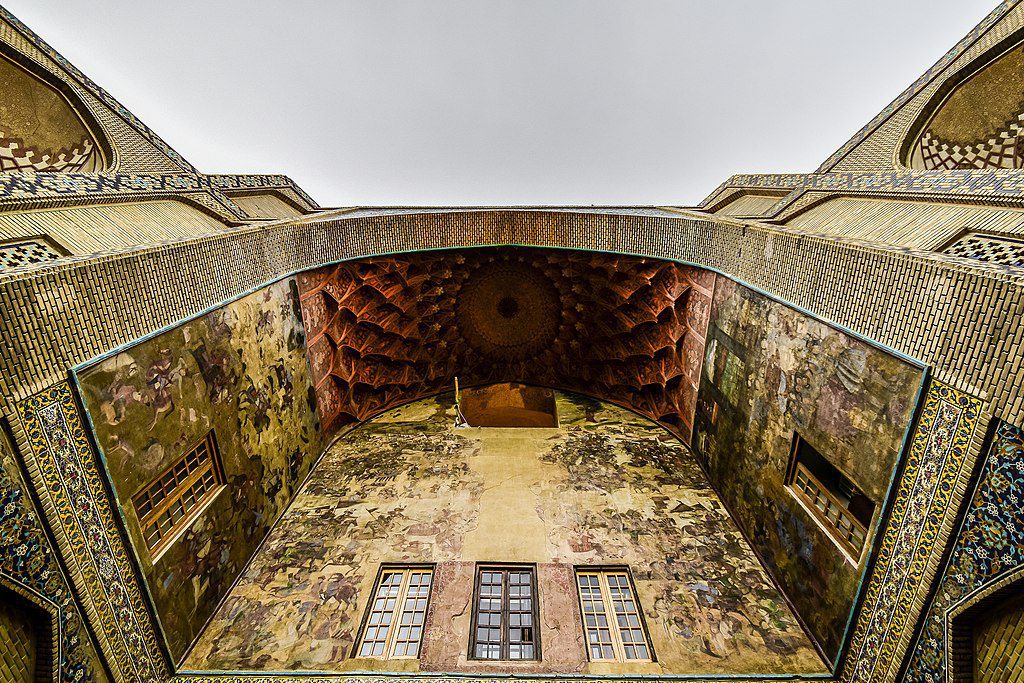
The architectural splendor of Grand Bazaar of Isfahan is truly remarkable. This grand Bazaar spans two magnificent floors. The upper floor was dedicated to administrative and commercial affairs, while the lower floor housed a variety of guild shops in close proximity to one another. The grandeur of Isfahan Bazaar radiates throughout, and its influence is evident in the various Bazaars that branch off from it, many of which are still operational and cater to diverse businesses.
Let’s explore some of the notable sections within the Isfahan Bazaar:
Four Sides of the Bazaar:
The heart of the Bazaar features a large circular area adorned with an exquisite dome embellished with intricate tilework. This central space connects Isfahan Bazaar to Timcheh Mint in the north, Solttani Mint in the east, and Karvansera in the west.
Shahi Caravanserai:
Situated in the western part of the Bazaar, the magnificent Shahi Caravanserai stands tall with its two floors and approximately 150 rooms. In the past, it served as a bustling caravanserai and a hub for administrative operations. Today, this historical site is commonly known as Sarai Malek Al-Tajjar among the locals.
The Mint:
The eastern section of the bazaar once housed a mint where coins were minted during the Safavid era. Although it has been transformed into a bank today, the architectural remnants bear testimony to its rich historical past.
The grand Qeysarie gate, which provides access to the Bazaar, is a sight to behold. Located in the north of Imam Square, it showcases a magnificent piece of artwork from the Safavid era.
The elaborate arch-shaped entrance, adorned with luxurious tiles and Safavid color paintings, welcomes visitors into the vibrant ambiance of the Isfahan Bazaar. While the third floor, previously a music hall, has vanished over time, the building remains a remarkable testament to the architectural prowess of Qeysarie city. Recognizing its cultural significance, Qeysarie gate was officially designated as a national monument of Iran on January 15, 1310.
Qeysarie Bazaar or Qeysarie Gate?
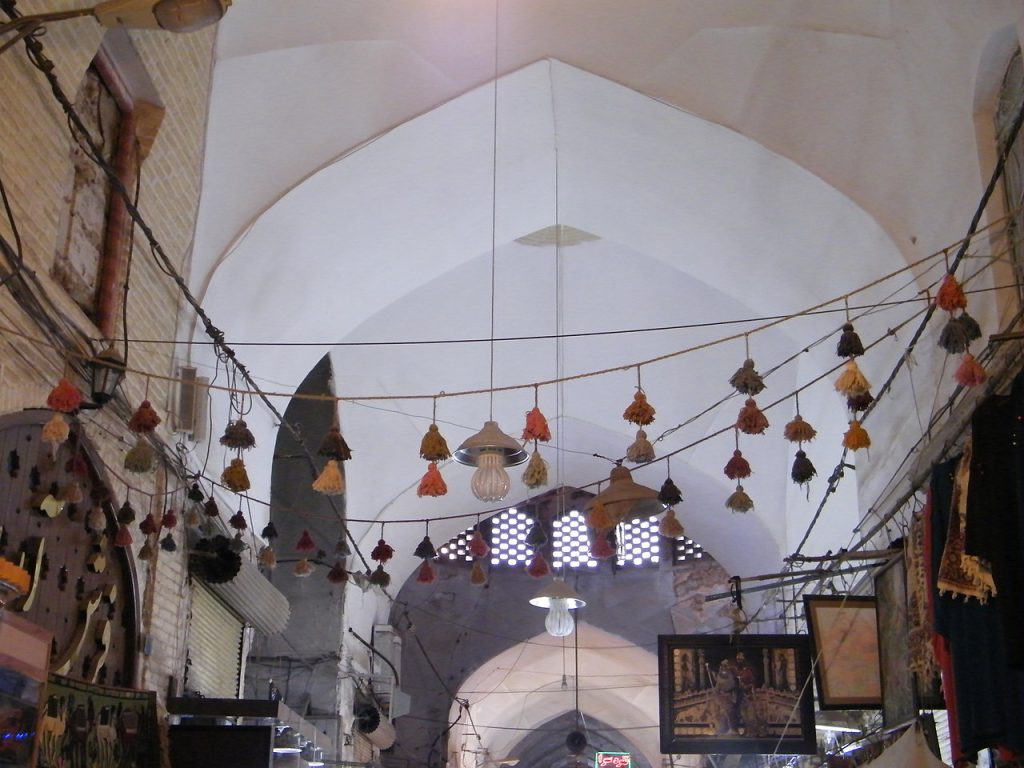
There might be some confusion surrounding the name of this historical landmark, as it is sometimes referred to as Qeysarie Bazaar and at other times as Qeysarie Gate. To clarify, Qeysarie Bazaar and Qeysarie Gate actually refer to two interconnected yet distinct components of the overall architectural complex.
Qeysarie Bazaar refers to the extensive network of interconnected corridors and shops that form the bustling marketplace. This part of the complex is renowned for its vibrant atmosphere, diverse range of goods and rich cultural heritage. It is a hub of commercial activity and a favorite destination for locals and tourists alike.
On the other hand, Qeysarie Gate, also known as Qeysarie Arch, is the grand entrance to the bazaar complex. It serves as the gateway to the bustling corridors and leads visitors into the lively atmosphere of the marketplace. This magnificent gate is an architectural marvel in itself, featuring intricate designs and ornate details that showcase the craftsmanship of the era.
Together, Qeysarie Bazaar and Qeysarie Gate create an immersive experience for visitors, with the gate serving as an impressive introduction to the bustling corridors of the bazaar. Exploring both components provides a comprehensive understanding of the historical, cultural, and architectural significance of this iconic landmark.
Whether you refer to it as Qeysarie Bazaar or Qeysarie Gate, this enchanting complex invites you to embark on a journey through time, immersing yourself in the vibrant tapestry of Iran history and culture.
Descriptions of Isfahan Bazaar
Renowned travelers and scholars have captured the essence of Isfahan Bazaar through vivid descriptions. Let’s explore some of their intriguing observations:
Pietro Delavalle speaks highly of the Isfahan Bazaar, highlighting its stunning features. He notes the beautiful landscape on the Bazaar’s side, reminiscent of the grand mosque in Abbasid architecture. Additionally, he marvels at the captivating brickwork, featuring pink and navy-colored tiles adorned with slimy designs. The walls of the main hall bear eye-catching paintings, portraying Shah Abbas’s battles with the Uzbeks, Europeans engaged in dance and song, and a hunting scene, which still retains its vibrant colors despite the passage of time.
French traveler Jean Chardin, known for his detailed travelogue, describes the grandeur of the Caesarea headland. He notes that the city of Isfahan was believed to have been built under the constellation of Sagittarius, with the tower serving as a symbol depicted on the palace and royal bazaar. Although the depiction deviates from the Western style of half-man and half-horse, the oriental representation features a half-man, half-tiger figure with a tail resembling a large snake. This magnificent artwork is an arrow aimed at the tiger’s mouth, signifying the influence of Sagittarius.
Shopping in Isfahan Bazaar
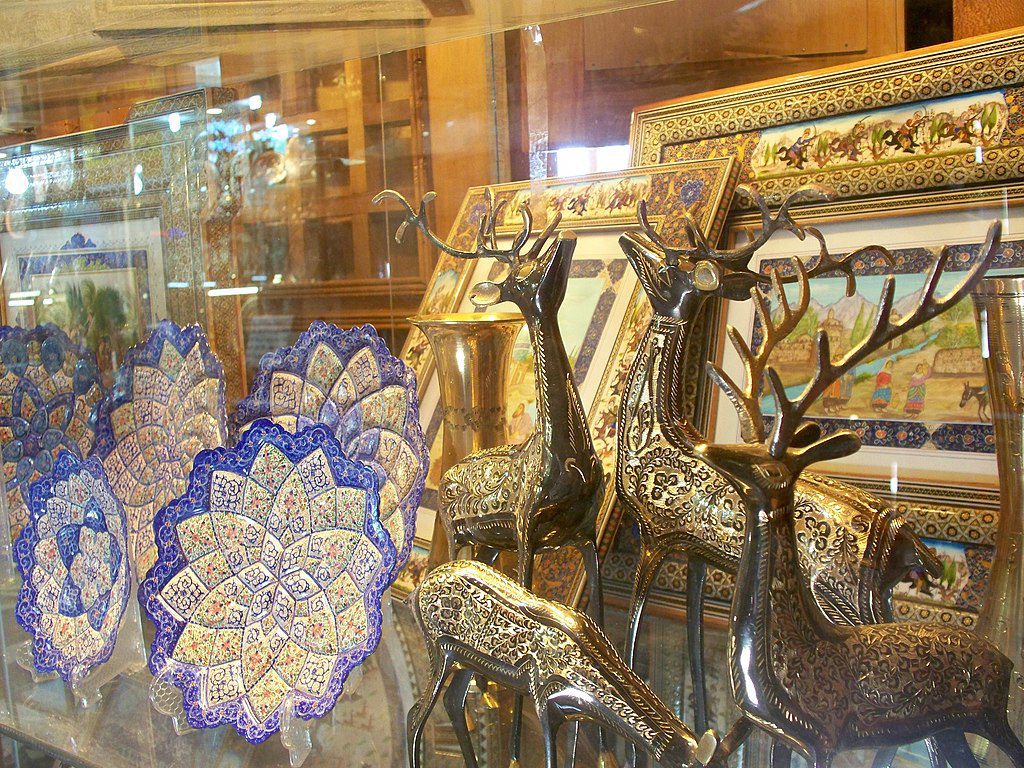
Grand Bazaar of Isfahan presents an excellent opportunity to acquire a wide array of unique items, souvenirs, and handicrafts reflecting the essence of Isfahan. While the sheer variety of goods may initially overwhelm visitors, exercising patience will ensure a rewarding shopping experience. It is important to note that, given the value of the handicrafts, prices should not be expected to be low. Nevertheless, Isfahan Bazaar offers more reasonable pricing compared to other Bazaars in Isfahan.
When exploring Isfahan Bazaar, visitors can find an assortment of items, including enamel tools, antique pocket watches, vintage artifacts, copperware, and traditional souvenirs. The Bazaar’s extensive offerings cater to different tastes and interests, ensuring a memorable shopping expedition.
Savoring the Traditional Cuisine
The Isfahan Bazaar is not just a shopping destination, but also a gastronomic paradise. Be sure to sample some of the traditional Iranian cuisine available at the numerous eateries and food stalls. From succulent kebabs to saffron-infused rice and aromatic stews, there’s a tantalizing array of dishes to satisfy your taste buds.
How to Get to Isfahan Bazaar
Qeysarie Bazaar is located in the heart of Isfahan, making it easily accessible by various means of transportation.
By Public Transportation
Isfahan has a well-connected public transportation system. You can take a bus or a taxi to Naqshe Jahan Square and find the Qeysarie Bazaar easily. If you’re staying in the city center, it’s also possible to reach the bazaar on foot.
By Car
If you’re driving, please note that parking near the bazaar can be challenging due to its central location and the high volume of visitors. It’s recommended to park your car at a nearby parking lot and walk to the bazaar.
Working Hours of Isfahan Bazaar
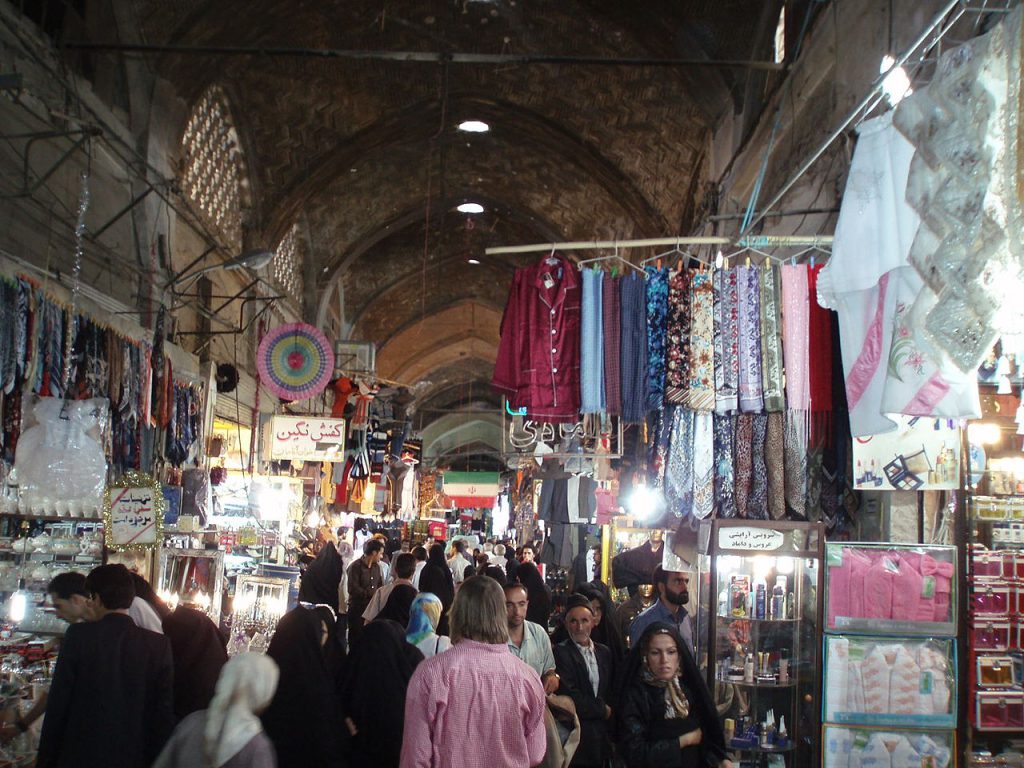
Isfahan Bazaar opening times correspond to the general business hours. Typically, during the first half of the year, the Bazaar is open from 9 am to 6 pm, while in the second half of the year, it operates from 9 am to 5 pm. It is advisable to plan your visit accordingly and allocate ample time to explore the Bazaar’s treasures at a relaxed pace.
Recommended Sightseeing Time of Isfahan Bazaar
The bazaar is open all year round, but to truly experience its vibrant atmosphere, it is recommended to visit during weekdays when the market is bustling with activity. The bazaar is usually less crowded in the early morning hours, which is an ideal time for those who prefer a more relaxed shopping experience.
Where to Eat Near Isfahan Bazaar
Azadegan Café
Azadegan Café stands out with its traditional Persian cuisine and captivating interior, making it a top choice for those seeking an authentic experience. Equally appealing is Bastani Café, where you can indulge in a variety of Iranian dishes.
Roozegar Café
Roozegar Café offers delightful snacks that are perfect for a quick bite. If you’re in the mood for something sweet, this spot serves up delicious desserts and expertly brewed coffee.
Where to Stay Near Isfahan Bazaar
Abbasi Hotel
For those seeking a truly memorable stay, the 5-star Abbasi Hotel stands out as a gem of Iranian hospitality. As one of the oldest hotels in Iran, Abbasi Hotel not only provides top-tier service but also immerses guests in a rich historical atmosphere. Staying at Abbasi Hotel is like stepping back in time, with its beautifully preserved architecture and exquisite decor reflecting centuries of Persian culture.
Piroozy Hotel
The 4-star Piroozy Hotel offers an excellent choice with its modern amenities and comfort. Piroozy Hotel ensures a comfortable and sophisticated stay with all the contemporary conveniences you might need. Whether you choose the historical charm of Abbasi or the modern luxury of Piroozy, your stay near Isfahan Bazaar will be nothing short of exceptional.
Other Attractions Near Isfahan Bazaar
Chehel Sotoon Palace
Chehel Sotoon Palace, also known as the “Palace of Forty Columns,” has a lovely garden and impressive buildings that show the glory of the Safavid era. The detailed paintings and mirrored interiors of Chehel Sotoon give a look into the rich and artistic past, making it a must-see for any visitor.
Hasht Behesht Palace
Just a short distance away is Hasht Behesht Palace, another jewel in Isfahan’s cultural scene. Known as the “Palace of Eight Heavens,” Hasht Behesht is famous for its beautiful eight-sided design and peaceful gardens. The palace’s delicate tile work and detailed stucco decorations show the skill of the Safavid period. Together, these two palaces provide a fascinating journey through the history and beauty of Persian buildings and art.
FAQs about Isfahan Bazaar
Where is Isfahan Bazaar located?
Isfahan Bazaar, or Qeysarie Bazaar, is situated in the northern part of Naqsh Jahan Square in Isfahan.
Why is Dardar Bazaar famous?
Dardar Bazaar, or Isfahan Bazaar, boasts exquisite paintings from the Safavid era and is adorned with luxurious tiles, which contribute to its fame and appeal.
What goods can be found in Isfahan Bazaar?
Isfahan Bazaar is a treasure trove of handicrafts, vintage items, and souvenirs that beautifully represent the rich cultural heritage of Isfahan. Visitors can find a wide range of unique products, but it’s important to note that the prices reflect the value of these exquisite crafts.
What are the visiting hours of Isfahan Bazaar?
The operating hours of Isfahan Bazaar are determined by the general business hours. Typically, it opens from 9 am to 6 pm during the first half of the year and from 9 am to 5 pm during the second half of the year.
Last Words: Experience the Best of Isfahan Bazaar with a Customized Tour
The Isfahan Bazaar, also called the Qeysarie Bazaar, is an important historic market. It provides a memorable experience for people who visit. This article will discuss the fascinating history and impressive architecture of the Isfahan Bazaar, and point out its special qualities.
If you want to truly enjoy the wonderful Isfahan Bazaar, it’s best to travel to Iran on a customized tour made just for you and your interests. This is where To Iran Tour can help. As a provider of professional Iran Tours, we work closely with travelers to plan the perfect trip. Our goal is to help you discover the fascinating history and amazing architecture of the Isfahan Bazaar, as well as Iran’s other cultural treasures, in a way that matches your individual travel style.
All you have to do is tell them what you are interested in, and we will take care of the rest.

